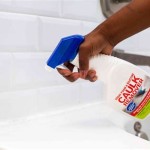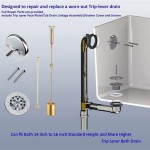Bathtub Drain Plumbing: A Comprehensive Guide to Essential Aspects
The bathtub drain is an integral part of any bathroom, serving as the primary outlet for wastewater. Understanding its plumbing components and mechanisms is crucial for maintaining a functional and efficient bathing space. This comprehensive guide will cover essential aspects of bathtub drain plumbing, providing a thorough overview for homeowners and plumbing enthusiasts.
1. Drain Assembly: The Heart of the Drain System
The drain assembly is the primary component of the bathtub drain, located at the bottom of the tub. It consists of several parts, including the drain stopper, strainer, and drain body. The stopper plugs the drain opening, preventing water from escaping, while the strainer traps hair and debris. The drain body connects the drain assembly to the plumbing system.
2. P-Trap: Preventing Unpleasant Odors
Below the drain assembly, the P-trap is a U-shaped section of pipe that houses a water seal. This water seal acts as a barrier, preventing sewer gases from entering the bathroom. By maintaining the water seal, the P-trap ensures a pleasant and odor-free environment.
3. Drainpipe: Piping Away Wastewater
The drainpipe, typically made of PVC or ABS plastic, carries wastewater from the bathtub to the main drainage system. It slopes downward to ensure proper drainage and prevent clogs. The drainpipe connects to the drain assembly on one end and the main drain line on the other.
4. Overflow Drain: A Safety Feature
Many bathtubs feature an overflow drain located near the rim. This drain prevents water from overflowing the tub in case of a malfunctioning drain stopper or excessive water flow. The overflow drain channels excess water into the main drain line, averting potential flooding.
5. Maintenance and Troubleshooting
Regular maintenance is essential for preventing problems with the bathtub drain. Periodic cleaning of the drain stopper and strainer helps remove hair and debris buildup. Using drain cleaners can help dissolve soap scum and other blockages. If clogs persist, professional plumbing assistance is recommended.
Conclusion
Bathtub drain plumbing is a vital aspect of bathroom functionality and comfort. Understanding the components and mechanisms involved empowers homeowners to maintain and troubleshoot their drain systems effectively. By following the guidelines outlined in this comprehensive guide, you can ensure a well-functioning bathtub that provides a relaxing and problem-free bathing experience.

Bathtub Plumbing Installation Drain Diagrams Diagram

Tub Drain How To Seal And Unclog A Bathtub Knoxville Plumbing

7 Bathtub Plumbing Installation Drain Diagrams

Bathtub Plumbing Installation Drain Diagrams Shower

Drain Overflow Assemblies Fine Homebuilding

Home Fix Gurgling Sound Erupts From Bathtub Drain

How To Install A Bathtub Toolrev

How To Install A Bathtub Drain

Bathtub Drain Subgrade Diy Home Improvement Forum

How To Replace A Bathtub Drain







